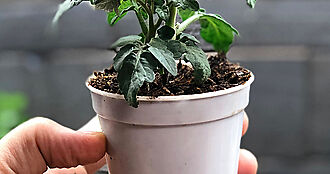Rain Lily
Rain Lily, Zephyranthes
Sometimes, the most delicate looking flowers can be the toughest. Rain lilies are known for bursting into bloom just after a rain shower in spring and summer.
Growing
Rain lilies grow well in full sun or partial shade. They tolerate a variety of soil conditions, although they prefer well-drained soil. They are very drought tolerant once established. Plants will appreciate annual applications of compost in heavier clay soils.
Rain lilies are very easy to grow from seed; the seeds are produced often and ripen in about 4 weeks.
Tips
Rain lilies are excellent for mixing into perennial or groundcover beds in clumps. They can also easily be grown in containers.
Recommended
Z. candida bears pure white blooms with a green throat. It is one of the toughest species available.
Z. citrine (Z. sulfurea) is the most common of the yellow-blooming species. It spreads easily by seed.
Z. grandiflora has lavish pink blooms, 3" across. The largest and showiest of the rain lilies, it prefers rich soil and regular feeding. It may sometimes be offered mistakenly as Z. robusta, another pink-blooming species.
Features: white, pink, yellow or bronze, tubular flowers that emerge after rain; thin, grass like, clumping foliage; prolific seed production
Height: 8–12"
Spread: 8–12" but clumps vary
Hardiness: zones 7–10
Notes: There are cultivars available that provide a varying range of colors, such as ‘Prairie Sunset,’ which blooms in peach.



